Corsair Carbide 330R Case Review
by Dustin Sklavos on August 25, 2013 12:00 PM EST- Posted in
- Cases/Cooling/PSUs
- Corsair
- ATX
While I'm curious to see how the Corsair Carbide 330R stacks up against alternatives like the Nanoxia Deep Silence cases and the Fractal Design Define R4, it's also worth paying attention to how it compares to the existing 300R. The 330R includes roughly the same cooling system, although it remains to be seen if the fans are identical. I suspect Corsair opted for quieter fans, but we'll see.
Ambient temperature during testing hovered between 23C and 25C.
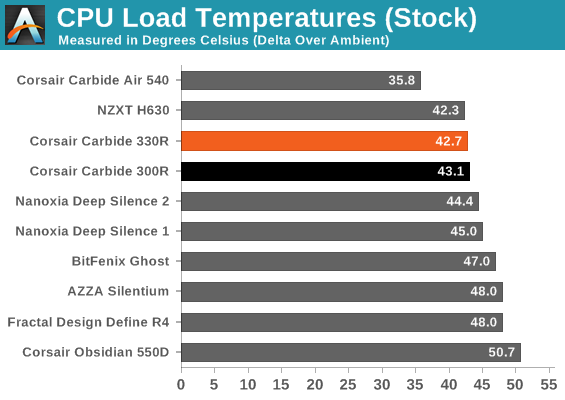
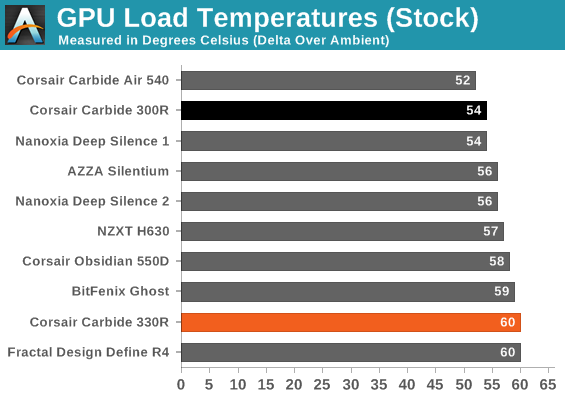
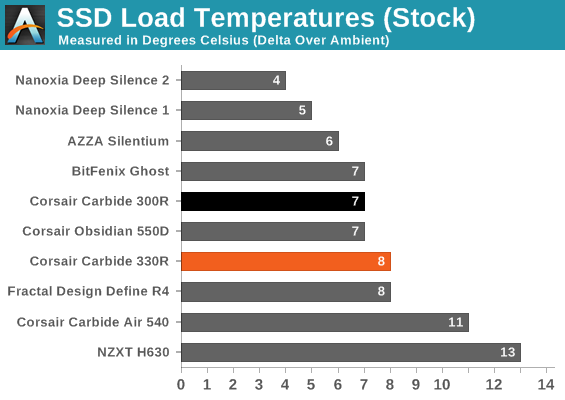
It's not unexpected that the 300R would outperform the quieter, more closed-off 330R; the CPU thermals are the only results where the 330R beats the 300R, and that's within the margin of error. The 330R does manage to post better thermals than Fractal Design's Define R4, though.
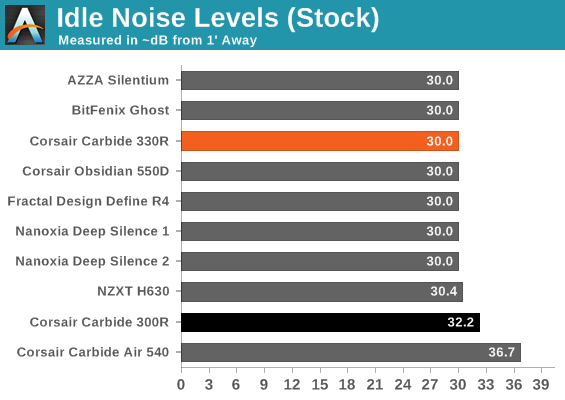

Interestingly, while the 330R is quieter at idle, the 300R is actually quieter under load. If you look at the temperature of the GTX 560 Ti, you'll see why: the 560 Ti runs much cooler in the 300R. Since graphics card fans tend to be among the biggest contributors to system noise, the hotter-running 560 Ti in the 330R is louder and overwhelms the acoustic material.
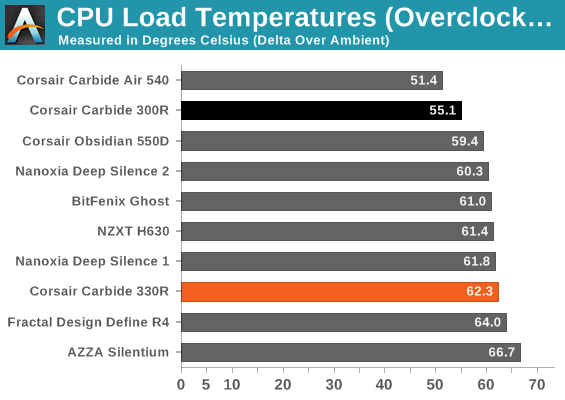
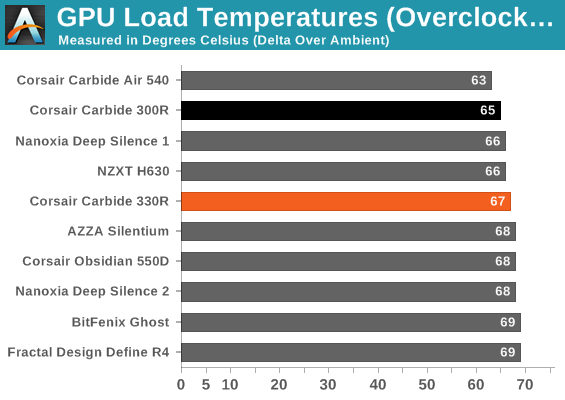
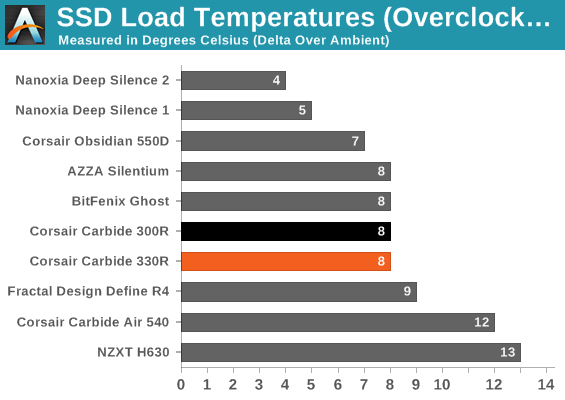
The trends largely continue with the overclocked bed. The 330R is able to consistently beat the Fractal Design Define R4 and mostly competes with the Nanoxia Deep Silence cases.
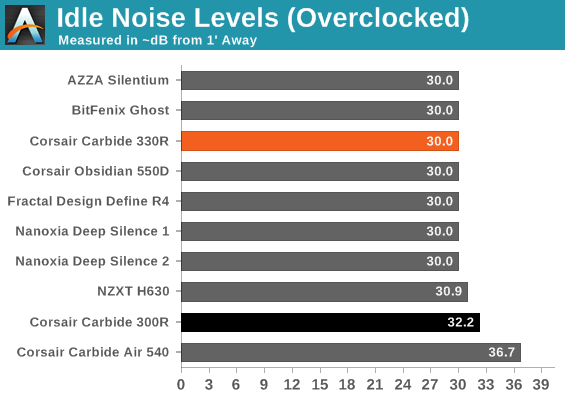
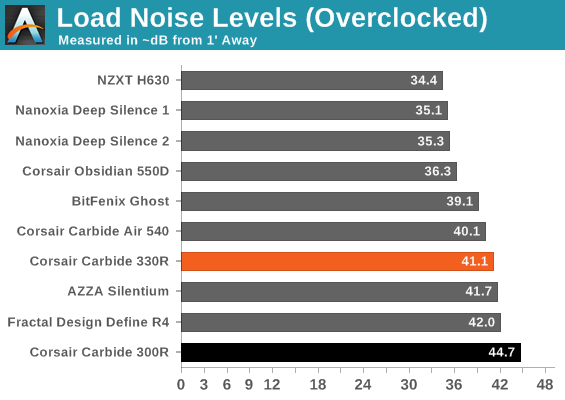
The 330R continues to beat the Fractal Design soundly, but Nanoxia's cases are much quieter while offering similar performance. Meanwhile, the 300R is essentially overwhelmed and the 330R is able to produce better acoustics under stress.
Our full fat testbed is going to seem a little unfair to a case that only has a 140mm intake and a 120mm exhaust, but it must be tested nonetheless.
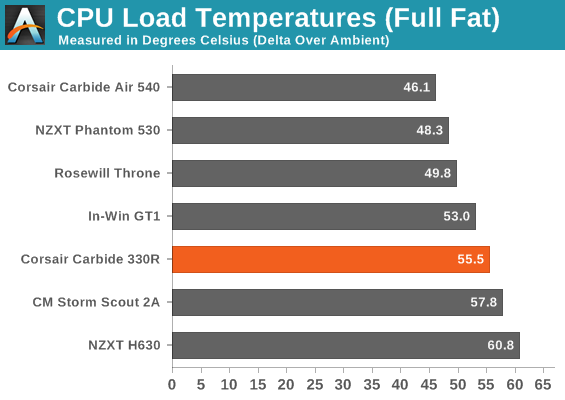
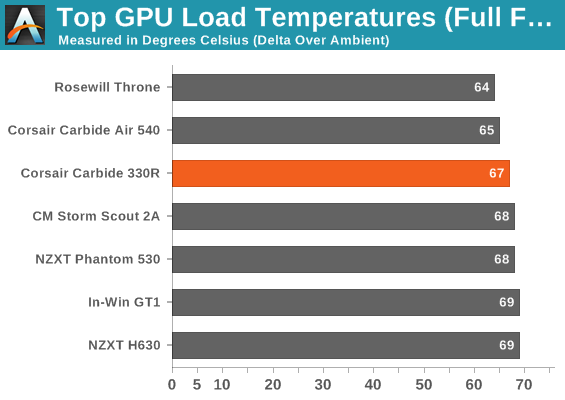
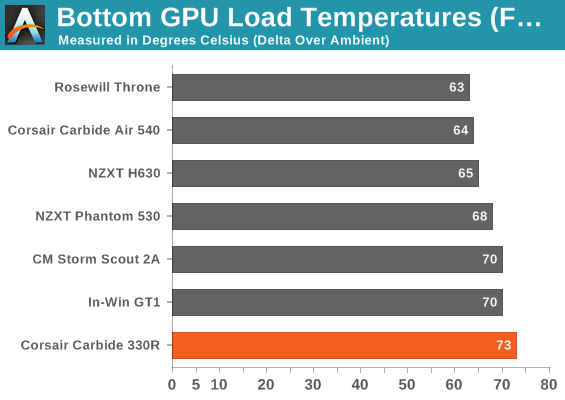
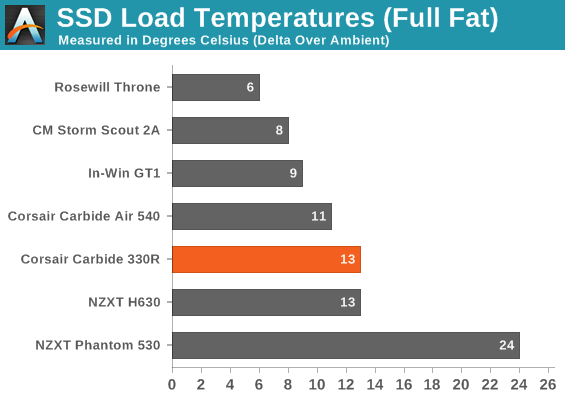

All things considered, the Carbide 330R is able to put in an acceptable showing. The hard drives and bottom GPU are cooking due to the lack of active airflow, though. This is definitely too ambitious a build for the 330R.
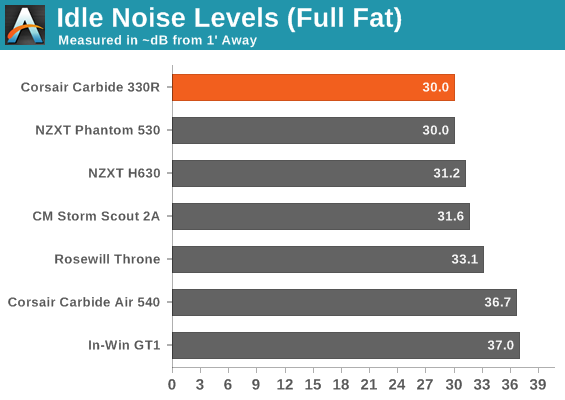
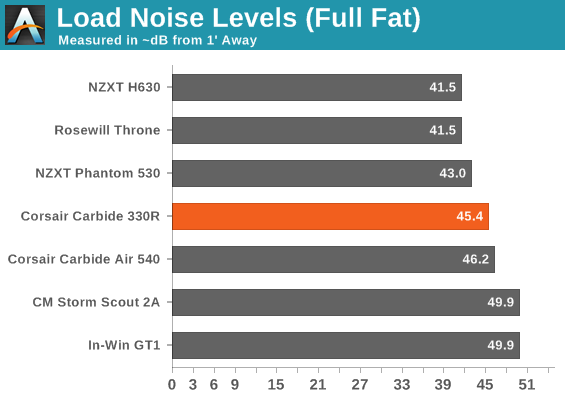
The dampening materials do a good job of keeping noise down at both idle and load, but heat does remain an issue for the 330R.










28 Comments
View All Comments
kmmatney - Tuesday, August 27, 2013 - link
I think what matters is getting the airflow going across the motherboard, and low-high fans do that.Penti - Sunday, August 25, 2013 - link
The traditional mid-tower even in the AT days actually has the PSU at the top and often the 5.25" drives above the motherboard, the negative about the drives in front of the board is actually that you need a very deep case, especially to fit say EATX and deep 5.25" drives such as optical drives or hot-swap drive bays, and even worse with SSI-EEB boards so to say. It's the same reason why there are removable hdd-cages in smaller cases, long cards – in these days graphics cards would not really fit in some cases otherwise. Traditionally you have the exhaust fan just behind the cooler in the back of the case rather than the failed BTX-design with air tunnels that didn't work for various reasons and tying up the use of the front of the case for air-tunnels was just one of the worst ideas ever. Even inverted cases don't have a clear air path for the cpu hsf. There is no going back to BTX and Prescott air-tunnel days. The important thing is to change the air in the case, a case fan isn't directly forcing air on the cpu cooler. I guess you love the good ol' days when cases had side fans above the cpu socket area too?Don't repeat past mistakes. Air flow is important to keep the case temp, and the ambient/case air inside the case cool. There is no need to have forced air or turbulent air everywhere and a front fan doesn't really do that either. And is quite far away from the cpu in modern cases to begin with.
JDG1980 - Sunday, August 25, 2013 - link
The test results don't bear out the statements you are making. The reviews of the Silverstone Raven RV04 and Corsair Air Series 540 demonstrate that having fans blowing straight onto the motherboard is far more effective than the indirect cooling favored by conventional ATX cases.JPForums - Monday, August 26, 2013 - link
Actually, the "standard" ATX tower had the PSU up top behind the optical drives. The dumb idea was to move the PSU down to the bottom while leaving the optical drives up top. The SilverStone Temjin TJ08 would be similarly effective with the board inverted or in a standard layout as the fan is large enough to provide airflow to a CPU cooler regardless of where it is located at on a microATX motherboard. Though to be fair, the Silverstone Fortress FT02 and FT04 (and Temjin TJ08) have largely proven that 90 degree rotation and inverted motherboard designs can be very effective.
OCedHrt - Sunday, August 25, 2013 - link
I don't get what the big deal is? How is this any better or different than my Antec P180 (and mini's).kmmatney - Tuesday, August 27, 2013 - link
I have a Antec P182, and it's basically dead silent once it's configured correctly.bobbozzo - Wednesday, August 28, 2013 - link
I really wish Anandtech would re-review some Antec cases so they could be compared with these others. The P183 V3 and the p280 are both still available.I'm still happy enough with my p182, but for friends building new systems, I don't know if I should still recommend Antec over the newer offerings.
bobbozzo - Wednesday, August 28, 2013 - link
Also the build quality of my p182 is extremely good, and I wonder how it compares to the Nanoxia, etc.Laststop311 - Sunday, August 25, 2013 - link
nanoxia deep silence still is the superior choice. Extremely low temps + extremely quiet. It's got it all. I'm big on silent computing and every article i read i never see a case beat the nanoxia cases. I've been waiting for years to see them beat but they still represent the best choice for silent + good tempsEnzoFX - Sunday, August 25, 2013 - link
I have my fair share of problems with the case reviews here, but measuring "silent" cases has to be the biggest. Can't imagine the noise floor being ideal. I also wouldn't call 30dba silent, if you want silent, it's pretty easy to go below that.